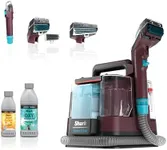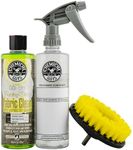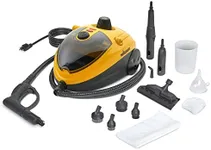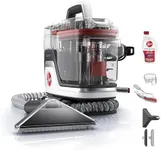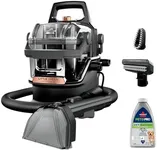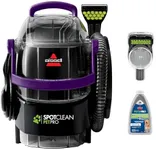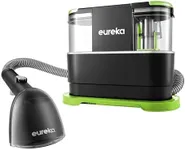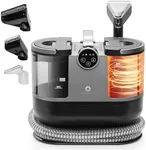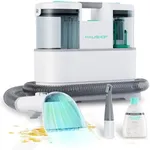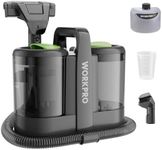Buying Guide for the Best Carpet Extractor For Car Detailing
Choosing the right carpet extractor for car detailing can make a significant difference in the cleanliness and appearance of your vehicle's interior. A carpet extractor is a specialized machine designed to deep clean carpets and upholstery by spraying a cleaning solution and then vacuuming up the dirt and moisture. When selecting a carpet extractor, it's important to consider several key specifications to ensure you get the best fit for your needs. Understanding these specs will help you make an informed decision and achieve professional-level results.Water Tank CapacityThe water tank capacity refers to the amount of water the extractor can hold. This is important because it determines how long you can clean before needing to refill the tank. Smaller tanks (1-2 gallons) are more portable and easier to handle but require frequent refills, making them suitable for smaller jobs or personal use. Medium tanks (3-5 gallons) offer a balance between portability and capacity, ideal for moderate use. Larger tanks (6+ gallons) are best for professional use or extensive cleaning tasks, as they allow for longer cleaning sessions without interruption. Choose a tank size based on the frequency and scale of your cleaning needs.
PSI (Pounds per Square Inch)PSI measures the pressure at which the cleaning solution is sprayed onto the carpet. Higher PSI means more powerful cleaning, which is essential for removing deep-seated dirt and stains. Low PSI (under 100) is suitable for light cleaning and delicate fabrics. Medium PSI (100-200) is effective for regular car detailing and most upholstery. High PSI (200+) is ideal for heavy-duty cleaning and professional use, tackling the toughest stains and dirt. Consider the level of dirt and the type of fabric you will be cleaning to determine the appropriate PSI for your needs.
Vacuum PowerVacuum power indicates the strength of the extractor's suction, which affects how well it can remove dirt and moisture from the carpet. Higher vacuum power results in better extraction, leaving carpets cleaner and drier. Low vacuum power is sufficient for light cleaning and small areas. Medium vacuum power is suitable for regular car detailing and most upholstery. High vacuum power is necessary for professional use and heavy-duty cleaning, ensuring thorough dirt and moisture removal. Choose a vacuum power level based on the intensity of your cleaning tasks and the desired drying time.
Heating ElementSome carpet extractors come with a heating element that heats the cleaning solution, enhancing its effectiveness in breaking down dirt and stains. Heated extractors are particularly useful for tough stains and heavily soiled areas. Non-heated extractors are generally lighter and more affordable, suitable for light to moderate cleaning tasks. Heated extractors are ideal for professional use or when dealing with stubborn stains and high-traffic areas. Consider whether you need the added cleaning power of heated water based on the condition of the carpets and upholstery you will be cleaning.
Hose LengthThe hose length determines how easily you can maneuver the extractor around the vehicle. A longer hose provides greater reach and flexibility, allowing you to clean hard-to-reach areas without constantly moving the machine. Short hoses (under 10 feet) are more manageable and suitable for small spaces. Medium hoses (10-15 feet) offer a good balance of reach and ease of use, ideal for most car detailing tasks. Long hoses (15+ feet) are best for professional use or larger vehicles, providing maximum flexibility. Choose a hose length that matches the size of the vehicles you will be detailing and your preferred working style.
PortabilityPortability refers to how easy it is to move the carpet extractor around. This is influenced by the machine's weight, size, and design features like wheels and handles. Lightweight and compact extractors are easier to transport and store, making them suitable for personal use or mobile detailing services. Medium-sized extractors offer a balance between capacity and portability, ideal for regular use. Larger, more robust extractors are best for stationary use in a professional setting, where maximum cleaning power and capacity are prioritized. Consider how often you will need to move the extractor and the space available for storage when evaluating portability.
